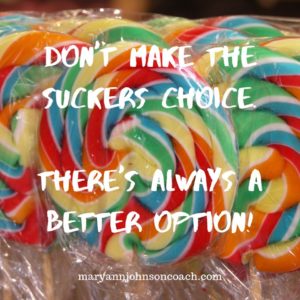 The Sucker’s Choice
The Sucker’s Choice
Are you ever faced with a situation that needs a resolution but the choices you see seem unfair or damaging? If you choose one despite not liking either option, that is called The Suckers Choice, and when made, it will inevitably leave someone feeling wronged. The Suckers Choice is almost always bad for relationships, including the one with ourselves.
Here is an example of what I am talking about:
When my daughter, Jodie, had her fourth baby, she suffered postpartum depression. To combat the effects, she decided to exercise by taking a walk with the kids in the morning. How do you think that went?
Let me share a walk I took with them just before the new baby was born. Jack and Mary took off running! This walk will be fast, I thought. Soon they reached our neighbors home with a ramp. It was up the ramp and down the ramp at a full run. Then it was up the ramp and down the ramp rolling over and over again. Good thing we were friends with this neighbor.
Next was the cement retaining wall. It had to be climbed on and then carefully followed by little feet. If anyone fell off, they felt they had to go back to the beginning and start again. Next was the yard with all the kids. Stop and chat. Let’s see what they are doing. Let’s join in!
And dogs! Every dog had to be spoken to and, if it was a happy dog, petted. EVERY dog! I never realized how many dogs we had in that neighborhood!
Then there were the treasures. Every walk is all about the treasures that have to be picked up, examined, and then stowed in the stroller, stones, sticks, leaves, torn paper cups, etc.
About halfway around the block, Mary’s little legs began to wear out. Remember, they have covered the first half at a full run (disregarding all the stops). So, it was into the stroller. The key to knowing when she wanted in the stroller was the phrase, WAIT, WAIT, WAIT!
Then we would press on for about 2 minutes (I do not exaggerate here), and then she would need to get out to see something or to run. The key phrase to know when she needed to get out was a clear STOP, STOP, STOP!
Did you get the timing on this little exercise that lasted for the second half of our walk? Into the stroller for 2 minutes or less. Out of the stroller for two minutes or less. Sigh! Can you see how frustrating this walk would have been for my daughter, who needed some sustained exercise?
Jodie had a couple of obvious choices –
• Don’t walk with the kids making taking a walk inconsistent
• Walk with the kids but be frustrated and angry
A Creative Problem-Solving Activity
How can we avoid making the Sucker’s choice and develop creative solutions to real and frustrating situations?
• Work on yourself first. You are likely to benefit by improving your approach, and you are the only person you can work on anyway.
• Make sure your heart is in the right place and stay focused on the matter at hand.
• Do NOT make the Sucker’s choice. Believe that there is always at least a third option.
• Determine what it is you want to happen. Ask, “What do I want here.”
• Ask the question, “What do I want for the other person?”
• Then ask this question “What do I want for the relationship?”
• Finally, ask a very telling question “How would I behave if I really wanted these results?”
• Search for the elusive AND. Present yourself with more challenging questions which turn the either/or choice into a search for the elusive AND. Clarify what you want and clarify what you don’t want. Present your brain with a more complex problem by asking the questions posed above.
“When we present our brain with a demanding question, our body sends precious blood to the parts of our brain that help us think, and away from the parts of our body that make us want to fight.” (from Crucial Conversations by Kerry Paterson, Joseph Grenny, Ron McMillan, Al Switzler) The Sucker’s Choice presents our brain with problems that are easily solved with restricted blood flow. They don’t require creative thought. The Sucker’s Choice keeps us stuck in ineffective strategies.
Now back to the story
How did Jodie solve the situation she was facing? First, she looked at her motives. Jodie needed to exercise to return to good health and did not want to be frustrated. She realized that she did not want to jeopardize her relationship with her children by being angry with them for natural, childish behaviors.
She knew that if she really wanted health and not to be angry with her kids, she would need to find a way to help them understand her need for a walk while still allowing them space and time to walk the way a child would take a walk. (Her kids were aged two mo. to 6 years old)
Creative Problem-Solving List and Process
Jodie asked the pivotal questions posed above and set her brain to develop at least a third alternative. She made a list.
• Get a babysitter
• Trade exercise days with another mom who also wanted to exercise with a sustained walk
• Walk when her husband got home and could watch the children
• Get up before the children and walk. (They are up at 5:30 sometimes!)
None of these options were realistic for her family situation for many reasons. She kept thinking, and here is what she finally came up with – Mom’s Walk and Kid’s Walk.
If it was a Mom’s walk, everyone stayed in the stroller, and mom would walk fast. If it was a kid’s walk, then everyone could get in and out of the stroller, and they would go slow. This is how the walks played out. Every morning was Mom’s walk. And if they walked in the afternoon, which they did at least twice a week, it was kids walk. Her children were happy with the arrangement. She was not frustrated, and her health and outlook improved significantly. Family relationships grew. They experienced joy.
As you recognize the Sucker’s Choice and work at creative solutions to your parenting problems, don’t expect perfection:
1. Aim for progress.
2. When you come up with a solution that succeeds, celebrate your success.
3. Take pleasure in knowing that you and your family are improving.
Here is a short video that will give you more information on avoiding The Sucker’s Choice.


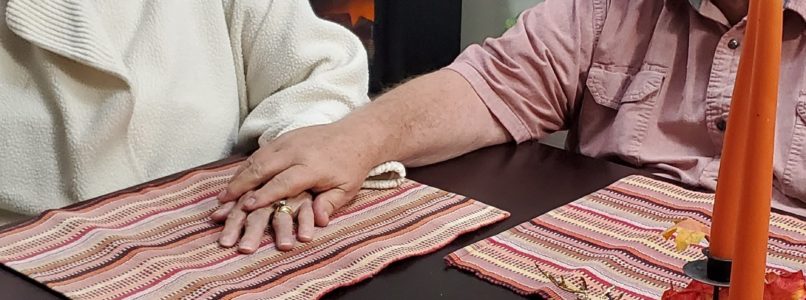
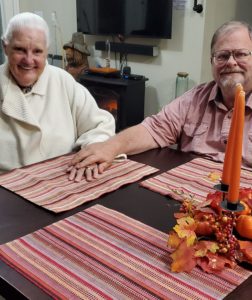 I have always had a dining room or kitchen table. Even in our first home, which was small, we had a table. I loved having a table. It was good to rest my elbows when I was reading or studying.
I have always had a dining room or kitchen table. Even in our first home, which was small, we had a table. I loved having a table. It was good to rest my elbows when I was reading or studying.


 In our district, kids are going back to school only two days a week. WHAT!!
In our district, kids are going back to school only two days a week. WHAT!!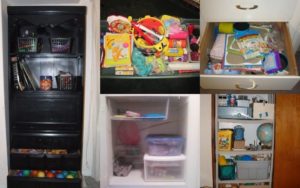 dresser, or any other place you can put new items to share with your children. It’s not the same as a storage space where you keep your learning materials, books, and craft items. Its purpose is to create a time and place when your children will be exposed to new and exciting ideas or be able to engage in things that already interest them, and where parents connect with their kids. It’s a time and space where both adults and kids can share what they feel joy or passion in, and what interests them, their SPARKS. I’ll share information on how powerful SPARKS can be.
dresser, or any other place you can put new items to share with your children. It’s not the same as a storage space where you keep your learning materials, books, and craft items. Its purpose is to create a time and place when your children will be exposed to new and exciting ideas or be able to engage in things that already interest them, and where parents connect with their kids. It’s a time and space where both adults and kids can share what they feel joy or passion in, and what interests them, their SPARKS. I’ll share information on how powerful SPARKS can be.


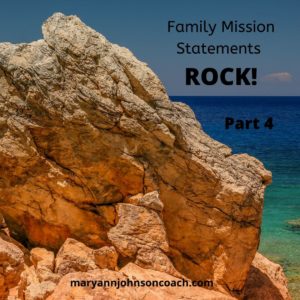 Congratulations on creating your family mission statement! However, for it to translate into a family culture, you must now use it. Here are some ideas to engage with your family mission statement in meaningful ways.
Congratulations on creating your family mission statement! However, for it to translate into a family culture, you must now use it. Here are some ideas to engage with your family mission statement in meaningful ways.

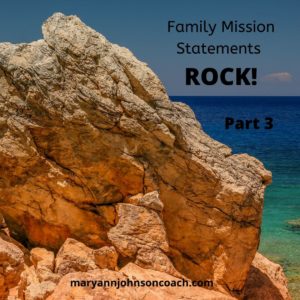 In preparation for writing your family mission statement:
In preparation for writing your family mission statement:

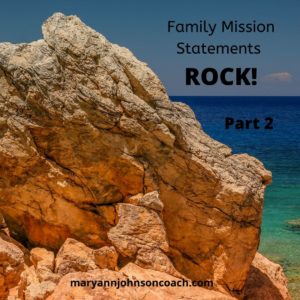 For many of you, developing a family mission statement may have been on your “to-do” list for a long time, but you have never gotten around to it. Or, maybe the idea is new and a bit daunting.
For many of you, developing a family mission statement may have been on your “to-do” list for a long time, but you have never gotten around to it. Or, maybe the idea is new and a bit daunting.

 Sometimes, as a parent, we’re handed opportunities for self-evaluation on a silver platter. I was given such a dish the other day when I caught my two-year-old son marching around the living room chanting, “Stop that! Now I have to take that away. Stop that! Now I have to take that away.” Good grief! I’m happy to contrast that little ditty with something he was muttering in my ear a few nights ago as I was putting him to sleep. “Daddy loves you; daddy loves you; daddy loves you.”
Sometimes, as a parent, we’re handed opportunities for self-evaluation on a silver platter. I was given such a dish the other day when I caught my two-year-old son marching around the living room chanting, “Stop that! Now I have to take that away. Stop that! Now I have to take that away.” Good grief! I’m happy to contrast that little ditty with something he was muttering in my ear a few nights ago as I was putting him to sleep. “Daddy loves you; daddy loves you; daddy loves you.”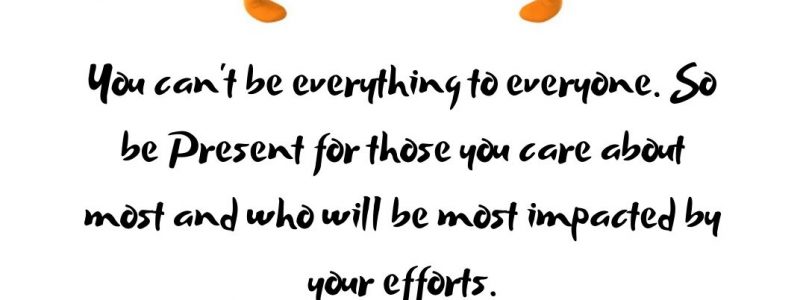
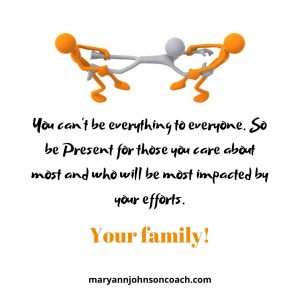 I saw an insurance commercial in which the adults (portrayed by kids) were being treated like children by the insurance company. They felt helpless, undervalued, and frustrated. When I saw this commercial, I, like most of you, could relate to those feelings. At the end of the commercial, a rival insurance company helped a woman (portrayed by a child) with her needs. She stood there smiling, feeling good.
I saw an insurance commercial in which the adults (portrayed by kids) were being treated like children by the insurance company. They felt helpless, undervalued, and frustrated. When I saw this commercial, I, like most of you, could relate to those feelings. At the end of the commercial, a rival insurance company helped a woman (portrayed by a child) with her needs. She stood there smiling, feeling good. of my relaxing and fun things to-do list. I was feeling some pressure. My 3-year-old daughter, Marie, kept coming into the sewing room and interrupting me. This and the sewing were wearing on my nerves. I was ready to spank her. After all, she was bugging me, and she could see perfectly well that I was busy! I decided if she interrupted me again, I was going to swat her.
of my relaxing and fun things to-do list. I was feeling some pressure. My 3-year-old daughter, Marie, kept coming into the sewing room and interrupting me. This and the sewing were wearing on my nerves. I was ready to spank her. After all, she was bugging me, and she could see perfectly well that I was busy! I decided if she interrupted me again, I was going to swat her.
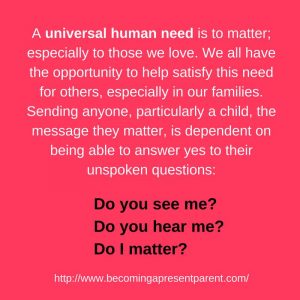 When we moved to Laurel, Montana over 3 decades ago it was a jolt. We had lots of little kids and we didn’t know anyone. We had no family in Montana and no one we knew had ever lived there.
When we moved to Laurel, Montana over 3 decades ago it was a jolt. We had lots of little kids and we didn’t know anyone. We had no family in Montana and no one we knew had ever lived there.